The 2019 Honda Passport Drives Like a Smaller Pilot, Because That's What It Is
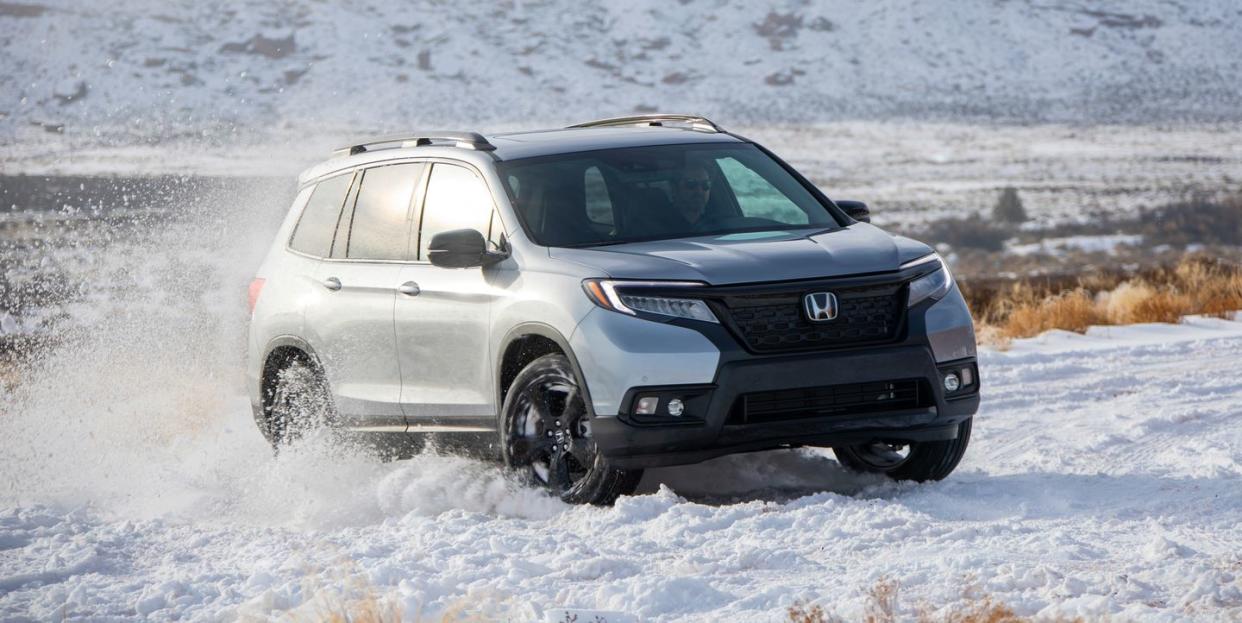
When automotive manufacturers introduce a new model, one might expect it to be all new. Although the 2019 Honda Passport marks the revival of a model name Honda last used 16 years ago on a mild off-roader that was really a rebadged Isuzu Rodeo, its real mission is to bridge the gap in Honda's lineup between the compact CR-V and the three-row Pilot.
This "all-new" Passport is pretty much mechanically identical to its Pilot stablemate, only shorter and without the wayback seat. This is no bad thing, if not exactly new. Motivation comes from Honda's ubiquitous 280-hp, SOHC 3.5-liter V-6. Floor the accelerator, and the i-VTEC indeed kicks in. The sole transmission available is the recently updated, ZF-sourced nine-speed automatic. It now downshifts with a bit more urgency, but we sense there's still some crisper snap hidden away in the gearbox. Even with Utah's higher elevation sapping away horsepower, the powertrain combination felt more than adequate for the Passport, which is barely lighter than its Pilot sibling.
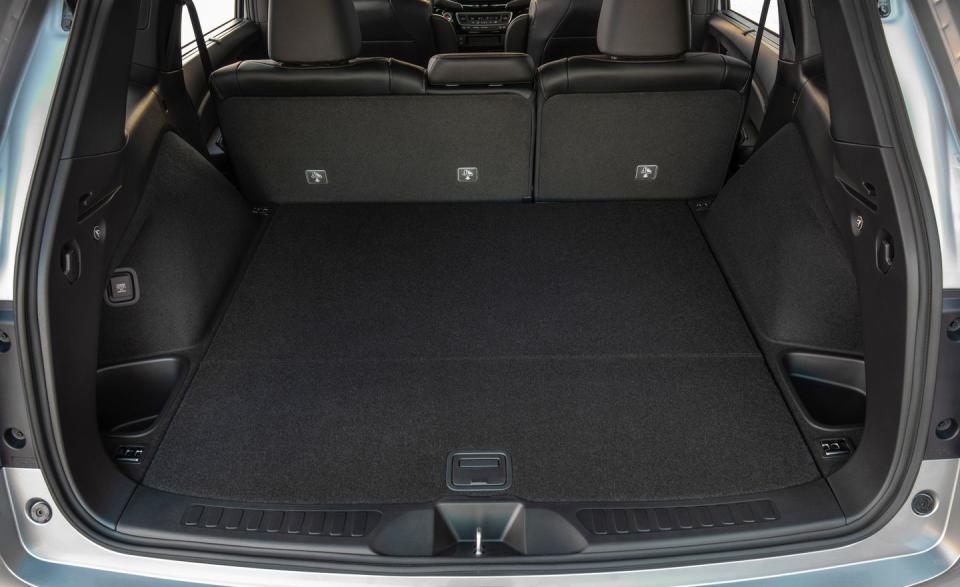
In the interest of efficiency, the V-6 mill can deactivate three of its cylinders and the rear driveshaft decouples under light load when torque to drive the rear wheels isn't required. The Passport's fuel economy falls about mid-pack, achieving a combined EPA rating of 21 mpg in front-wheel-drive models and 22 mpg when equipped with all-wheel drive.
Tough Guy
Honda is quick to hype the Passport's off-road chops, and the argument may carry a thin, deli-cut slice of meat to it. Our introductory drive was limited to the top-spec Elite trim that comes with standard all-wheel drive (it's a $1900 option on lesser trim levels). Though serious off-road fanatics will note that the Passport lacks any underbody-protecting skid plates, the AWD Passport's 8.1 inches of ground clearance (front-drive models have 7.5 inches of clearance) is achieved from the use of taller springs.
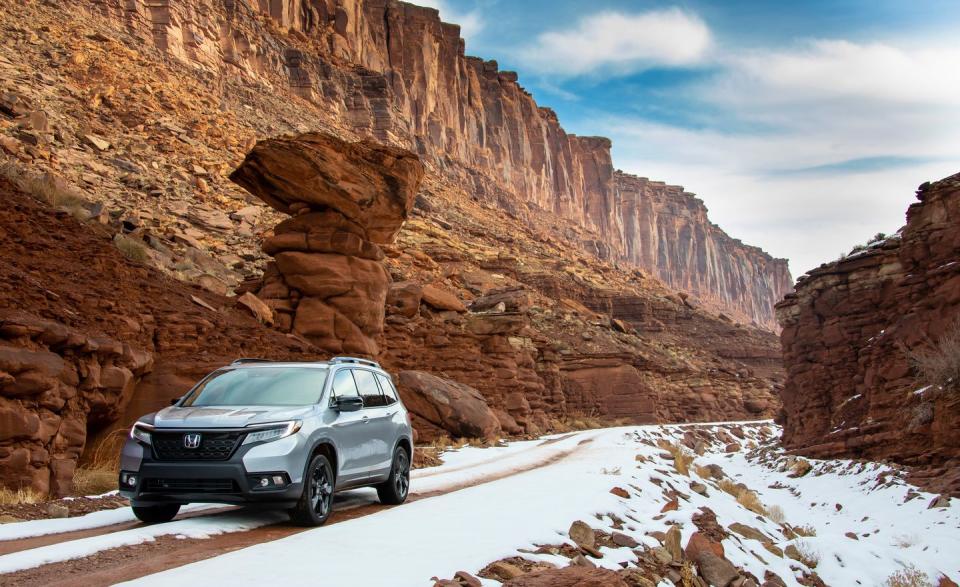
The improved object-clearing angles (approach, break over, and departure) provide more rock-creeping ability than Passport owners are likely to need, and the trucklet proved capable of mild off-road excursions along Moab's less-traveled paths. When equipped with all-wheel drive, the Intelligent Variable Torque Management (i-VTM) features Normal, Sand, Snow, and Mud drive-mode settings that masterfully redirect torque to the wheels that need it. The iVTM system also provides real torque vectoring through the rear differential-not some brake-based emulation system-which allows it to send 100 percent of the torque to either rear wheel when needed. All Passports come with 20-inch wheels, and the 265/45R-20 Continental CrossContact LX Sport rubber on the Elite models we drove conquered sand, mud, ice, and broken rock with relative ease, though they might not be the most ideal size for serious off-road adventuring. (The Sport and EX-L are fitted with 245/50R-20 tires). The wheels look handsome, but there is some jouncing over jagged terrain when carrying modest speed. One oversight, considering Honda's emphasis on off-road ability, is that the Passport lacks hill-descent control. Fortunately, the brake pedal is firm and easy to modulate while controlling your own descents.
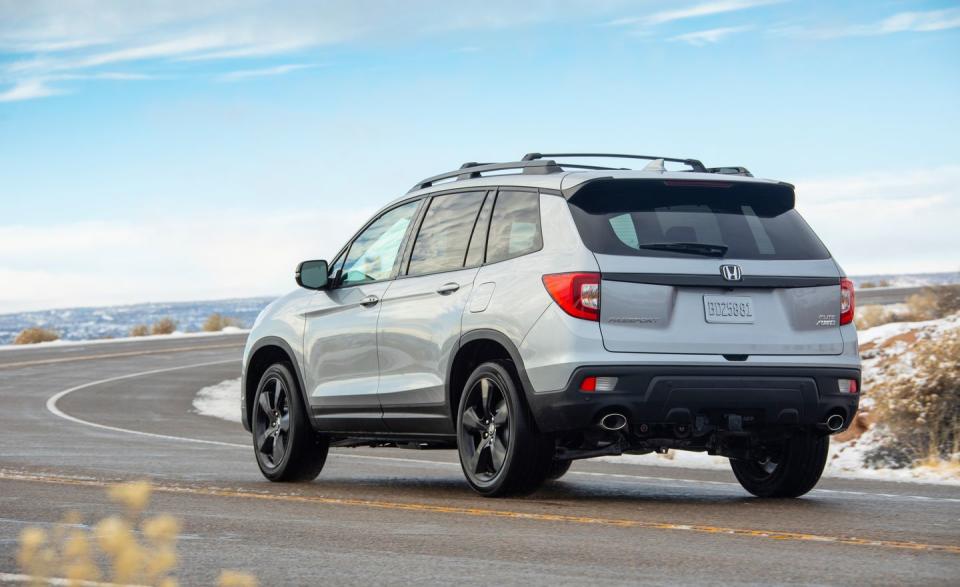
On pavement, the Passport drives a lot like a Pilot. The steering rack has a quicker ratio but feels sluggish off-center and feathery light from lock to lock. And there's simply no masking the Honda's towering center-of-gravity during quick transitions. Hustling the Passport through Utah's twisty canyons is like playing vehicular Jenga, with its substantial body lean ever present. Like the Ridgeline and Pilot, front-wheel-drive Passports are rated to tow 3500 pounds and all-wheel-drive models are capable of hauling 5000 pounds-but only after a few dealer-installed accessories, including a trailer hitch ($360), wiring harness ($225), and transmission cooler ($385), are added that unlock those full towing capacities.
Seeing Double
From the front seat, the dashboard, the steering wheel, and the center console are reminiscent of the Pilot's because they are shared. The front chairs and their accompanying armrests provide a high level of comfort. The rear seat bottom slides fore and aft, and the backrest tilts, so it's equally accommodating. The Passport's boxy interior is a boon for cargo volume, boasting an abundant 78 cubic feet with the rear seats folded and 41 cubes with them upright. There's also generous amount of stowage beneath the rear load floor.
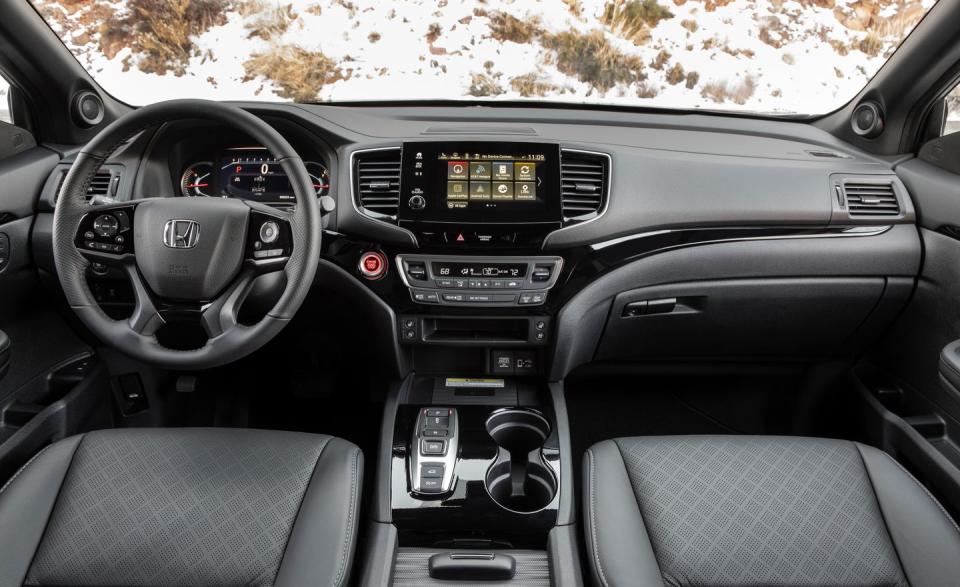
The base-level Passport Sport starts at $33,035 and includes LED lighting at all four corners, remote start, and a small infotainment screen. The $37,455 EX-L trim adds an 8.0-inch touchscreen with Android Auto and Apple CarPlay compatibility, leather upholstery, and a power liftgate. For $40,325, the Touring trim adds heated outboard rear seats, roof rails, and front and rear parking sensors. Lastly, the $44,725 Elite offers ventilated front seats, a heated steering wheel, and inductive phone charging. All Passports benefit from standard Honda Sensing, a host of electronic safety systems such as adaptive cruise control, forward-collision alert, and lane-keeping assist.
Visually, the Passport blends elements of both the Honda Ridgeline pickup and the Pilot. Its front fascia looks (slightly) more aggressive than that pair's, and the rear is distinct. The two-row Passport's body measures 6.5-inches shorter than the three-row Pilot's despite riding atop the same 111.0-inch wheelbase. To call it "all-new" might be rather generous, but the 2019 Honda Passport definitely satisfies its mission-and should surely satisfy Honda's coffers-as a capable and practical middle ground in Honda's core crossover lineup.
('You Might Also Like',)

